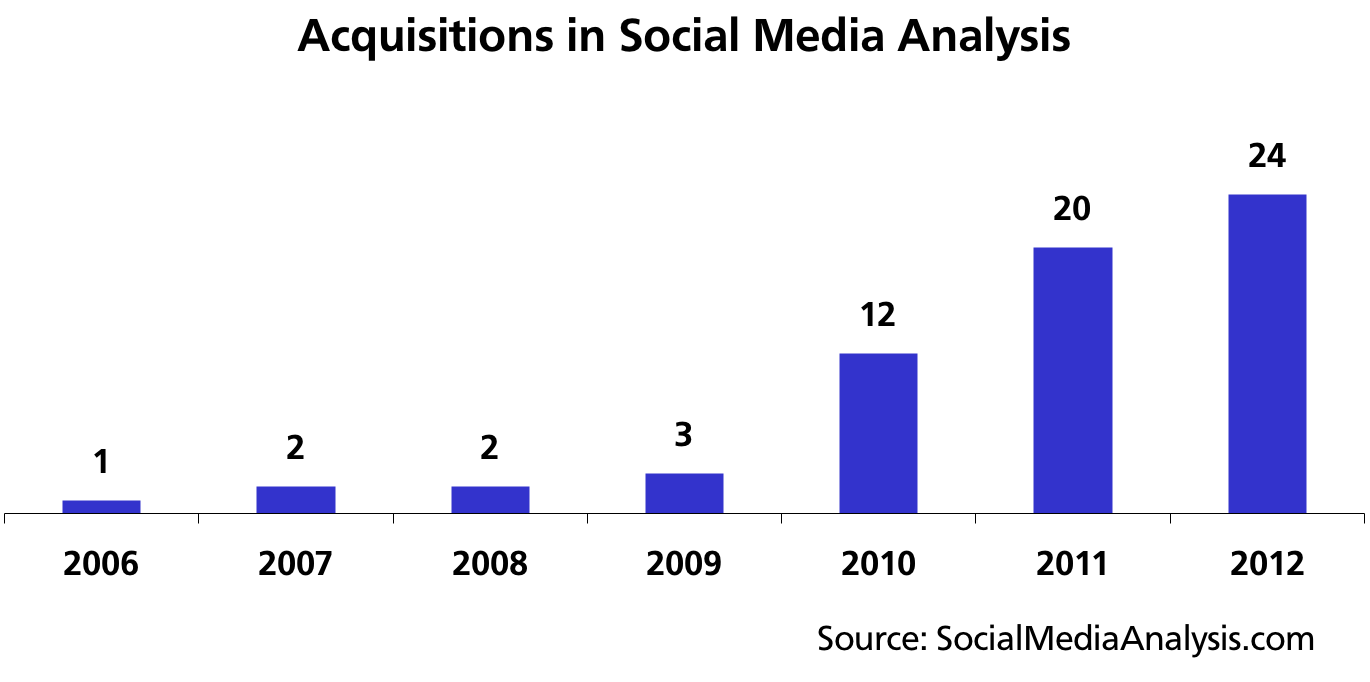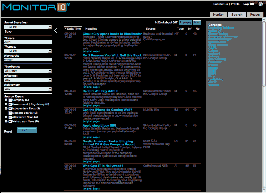I've been tracking acquisitions in social media analysis for years. It feels like we've had a lot of deals this year, and based on what I've seen, it's true. The volume has gone up every year. This year, I thought I'd do something new: I wrote a recap of the activity, which you can find at The Year in M&A, Social Media Analysis 2012.

As with the big directory of over 400 companies, the list of transactions requires some judgment about which deals to include. The companies that offer turnkey platforms for monitoring social media are easy. Others offer some of the building blocks for developers who want to focus on other pieces or enterprises building their own tools. Most run on a software-as-a-service (SaaS) model, though some licenses software for on-site installation. The variation gives the market a fuzzy edge, so it's not obvious what to include.
For SMA, I've chosen to go with a coarse filter, which means that I tend to err on the side of inclusion. If I sometimes reach too far, its because I think there's value in knowing what's happening on the other side of the fence.
Looking back
2012 was about more than acquisitions, of course. The investment deal flow continues, which I plan to recap separately, and I'm still discovering new—and new-to-me—companies fairly regularly. At the other end of the lifecycle, I've noticed an increase in companies shutting down quietly and a few sales of "assets" (as opposed to operating companies).
In 2006, I thought I'd find every company in the world developing tools to work with social media data. By now, I think we've established that it's not possible, but it remains an interesting space to watch.
Update: the 2012 investment recap is now up.
 When I talk with people in the
When I talk with people in the 
 Some blog comments (discussion on
Some blog comments (discussion on 
